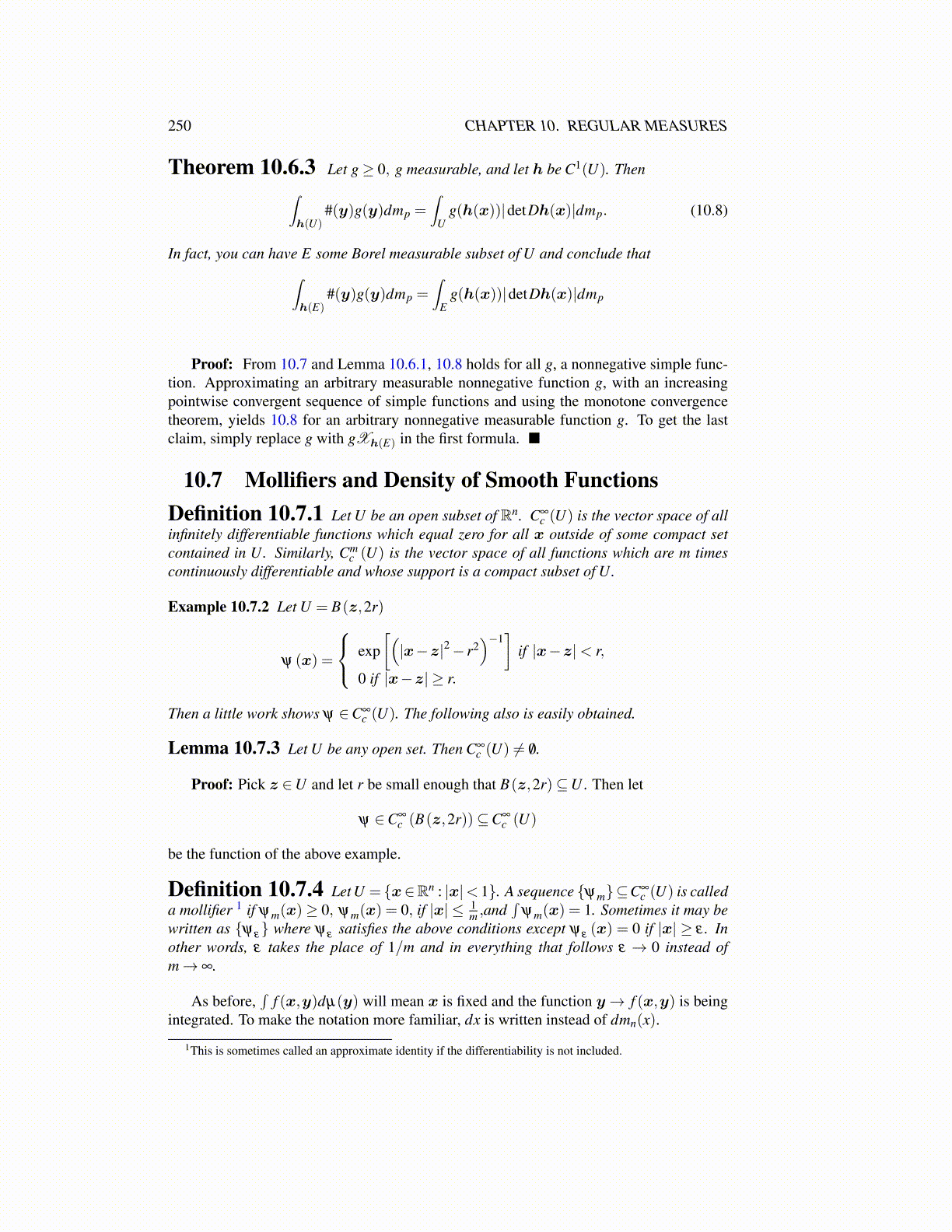
250 CHAPTER 10. REGULAR MEASURES
Theorem 10.6.3 Let g≥ 0, g measurable, and let h be C1(U). Then∫h(U)
#(y)g(y)dmp =∫
Ug(h(x))|detDh(x)|dmp. (10.8)
In fact, you can have E some Borel measurable subset of U and conclude that∫h(E)
#(y)g(y)dmp =∫
Eg(h(x))|detDh(x)|dmp
Proof: From 10.7 and Lemma 10.6.1, 10.8 holds for all g, a nonnegative simple func-tion. Approximating an arbitrary measurable nonnegative function g, with an increasingpointwise convergent sequence of simple functions and using the monotone convergencetheorem, yields 10.8 for an arbitrary nonnegative measurable function g. To get the lastclaim, simply replace g with gXh(E) in the first formula. ■
10.7 Mollifiers and Density of Smooth FunctionsDefinition 10.7.1 Let U be an open subset of Rn. C∞
c (U) is the vector space of allinfinitely differentiable functions which equal zero for all x outside of some compact setcontained in U. Similarly, Cm
c (U) is the vector space of all functions which are m timescontinuously differentiable and whose support is a compact subset of U.
Example 10.7.2 Let U = B(z,2r)
ψ (x) =
exp[(|x−z|2− r2
)−1]
if |x−z|< r,
0 if |x−z| ≥ r.
Then a little work shows ψ ∈C∞c (U). The following also is easily obtained.
Lemma 10.7.3 Let U be any open set. Then C∞c (U) ̸= /0.
Proof: Pick z ∈U and let r be small enough that B(z,2r)⊆U . Then let
ψ ∈C∞c (B(z,2r))⊆C∞
c (U)
be the function of the above example.
Definition 10.7.4 Let U = {x∈Rn : |x|< 1}. A sequence {ψm}⊆C∞c (U) is called
a mollifier 1 if ψm(x)≥ 0, ψm(x) = 0, if |x| ≤ 1m ,and
∫ψm(x) = 1. Sometimes it may be
written as {ψε} where ψε satisfies the above conditions except ψε (x) = 0 if |x| ≥ ε . Inother words, ε takes the place of 1/m and in everything that follows ε → 0 instead ofm→ ∞.
As before,∫
f (x,y)dµ(y) will mean x is fixed and the function y→ f (x,y) is beingintegrated. To make the notation more familiar, dx is written instead of dmn(x).
1This is sometimes called an approximate identity if the differentiability is not included.